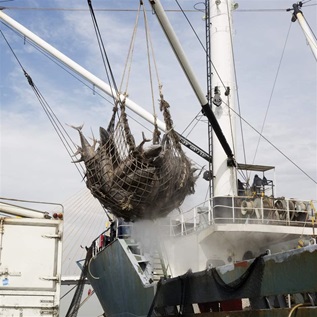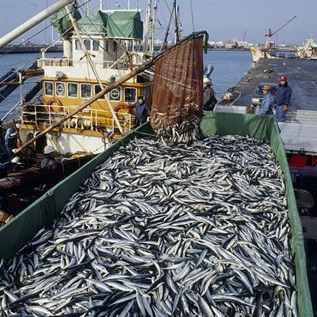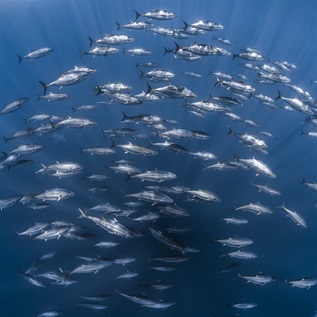WCPFC: It's Time to Take Action for Pacific Bluefin Tuna
Pacific bluefin tuna are in trouble. After years of overfishing, inadequate management, and growing demand, the population has reached historically low levels. The latest stock assessment by the International Scientific Committee for Tuna and Tuna-like Species in the North Pacific Ocean, or ISC, shows that fishing has decimated Pacific bluefin and that the population is now at less than 4 percent of its unfished size. The Western and Central Pacific Fisheries Commission has a responsibility to conserve and manage this important fish stock. Despite this dire situation, and a determination by scientists that current fishing levels will not improve the status of the species, the WCPFC's Northern Committee has failed to agree on a measure that would decrease catch from current levels.
It is time for the full WCPFC to fulfill its mission to conserve Pacific bluefin tuna by acting decisively to protect this highly vulnerable population. At this year's meeting in Cairns, Australia, the Commission should direct the Northern Committee to recommend a long-term rebuilding plan in 2014. That plan should include catch limits that will return the Pacific bluefin population to 25 percent of its original size by 2024, as well as a minimum size limit to protect juvenile fish from overexploitation.
96 percent depletion—A failure of management
The ISC, the independent body tasked with providing scientific information and advice to the WCPFC on northern Pacific species, recently completed a stock assessment for Pacific bluefin. The assessment found that the population had dropped 96.4 percent from unfished levels, including a steady decline over the past 15 years, leaving the population at just 3.6 percent of original levels. In addition, juvenile fish have made up more than 90 percent of the catch in recent years. Years of unchecked overfishing had left the stock at dangerously low levels.
The scientific advice: reduce mortality
The ISC report warned that continuing the fishery at recent catch levels would not improve the species' status. The scientists noted that scientifically informed catch limits could be particularly effective for increasing the population size. They also saw a need for steps to reduce mortality, especially for juvenile fish, to limit the risk that the population would fall below its historically lowest level.
The Northern Committee fails to take decisive action
The WCPFC Northern Committee, which is responsible for managing species above 20°N in the western and central Pacific, is charged with making management recommendations for Pacific bluefin in the Convention area. In September, despite the results of the stock assessment and the scientific recommendations, the Northern Committee failed to agree on a measure that would reduce overall fishing effort. Instead it set juvenile catch limits at a level that will actually allow countries to increase their catch from last year's total.
It is time for the WCPFC to act
Based on the WCPFC Rules of Procedure, the full Commission cannot regulate Pacific bluefin without a recommendation from the Northern Committee. However, the Commission can request that the Northern Committee formulate a recommendation for management. The Northern Committee then must comply within the time period set by the Commission.
Therefore, at this annual meeting, to ensure the protection of the severely depleted Pacific bluefin population and to begin the rebuilding process, the Commission should request that in 2014 the Northern Committee agree on a rebuilding plan that includes catch limits that will lead to a greater than 60 percent probability of returning the Pacific bluefin tuna population to 25 percent of its original biomass by 2024.
The Commission also should request a minimum size limit of 20 kilograms, which would prohibit catch of Pacific bluefin ages 2 years and younger and would protect the youngest juvenile bluefin. A recent study estimated that a minimum size limit would lead to substantial gains in spawning population and total biomass.1 The study also found that a 20 kg minimum size limit would result in a long-term yield approximately 2.5 times larger than current levels.
Endnotes
1 T. Gedamke, Western and Central Pacific Fisheries Commission, “Preliminary Analyses of the Potential Impacts of Minimum Weight Regulations for Pacific Bluefin Tuna” (2013), Scientific Committee Ninth Regular Session, WCPFC-SC9-2013/SA-WP-15.











